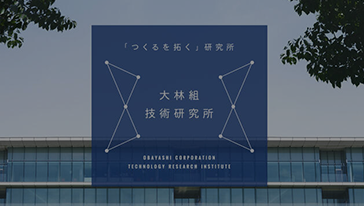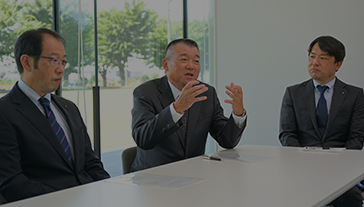
Tunnel Construction Professionals
Technology Research Institute
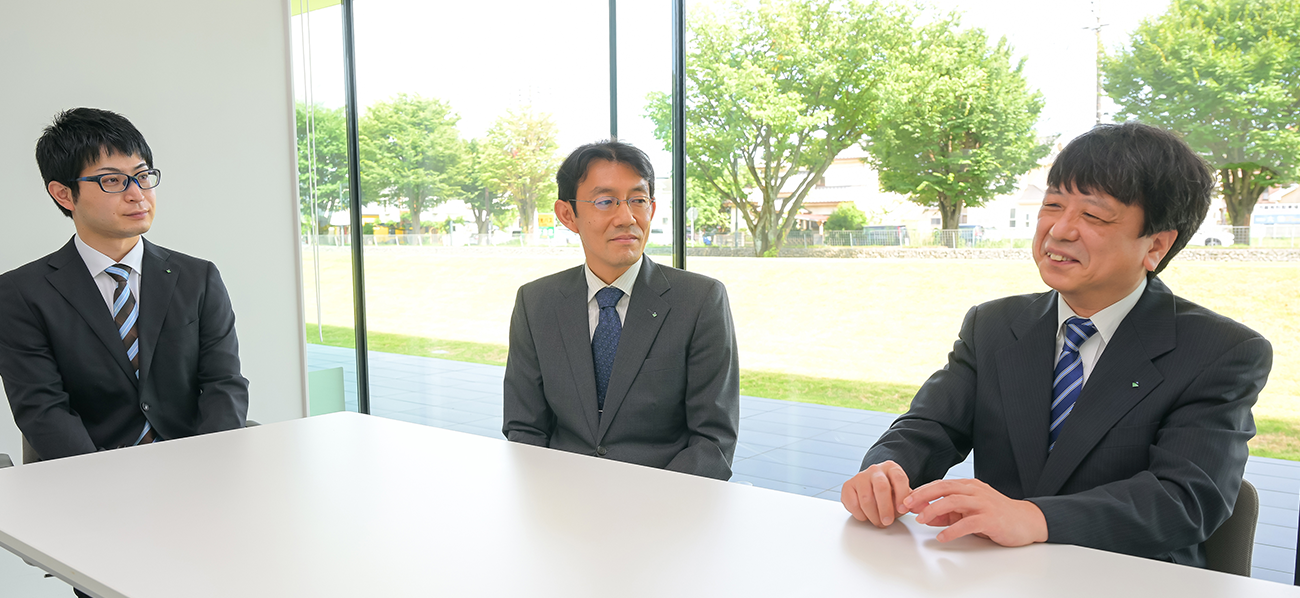
Principal Engineer, Geotechnical Engineering DepartmentKenichi NAKAOKA
Manager, Geotechnical Engineering DepartmentKoichi OKUZAWA
Chief, Geotechnical Engineering DepartmentYoshihiro MIYAKE
“Accumulating experience and knowledge for further pursuit in geology”
Daily research for construction safety
NAKAOKA:
I conduct rock mass analysis to improve the safety and productivity of construction sites. Specifically, I conduct rock sample tests to estimate the strength of the rock mass and predict the deformation of tunnels based on these results to construct them safely. It is often said that only through excavation, the rock mass condition can be known. To clarify the uncertainties as much as possible, I also conduct research to measure the rock mass deformation.
Our daily research is a low-key, trial-and-error process. Once, we were to measure rock mass deformation, but what was actually measured was the movement of the measurement device itself, because the installation was unstable. Also, predictions based on painstaking analysis often come out wrong. But we learn from all failures. Gaining experience and knowledge is the best part of research.
OKUZAWA:
In the rock mass research team, I specialize in geology. Tunnel contractees conduct preliminary geological surveys to decide on the kind of construction they want, while my team use our geological knowledge to estimate the rock mass conditions in detail. If there are any risks of tunnel collapse or deformation, we take countermeasures with the staff on site.
Topography check is also a must. In the past, a site was considered non-problematic, but we have found traces of landslides through written accounts and field surveys. Being unaware of the risk, we could have caused landslides and severe deformation of the tunnel. That is why checking the geology and topography based on specialized knowledge before construction is very important.
MIYAKE:
I am in research and development of information gathering technologies of geology required for tunnel construction. Advances in technology also lead to overall construction efficiency, such as shorter construction periods and cost reductions. I get inspiration from attending conferences and listening to the voices of surveyors and staff on site. When difficult issues arise at construction sites, it is important to go to there in person. When a newly developed technology didn’t work properly, I prepared countermeasures with various people and observed the work on site, where we discovered that the machine was assembled incorrectly. It was really a minor mistake, but it turned out to be the trigger that led to the problem. In technical development, you can detect errors by going to the site and gathering information yourself.
I originally studied pedagogy, so in research of technical topics, I tend to learn things until I can explain the main points in a coherent manner. This way, I try to communicate clearly to people inside and outside the company how geological surveys and technological developments are utilized at construction sites.
Eliminating tunneling issues
NAKAOKA:
Due to the heavy load of the mountains, tunnels in mountain areas are susceptible to gradual deformation over time after excavation, which damages the concrete and other reinforcement materials. To predict such long-term deformation beginning from the time of excavation to after the completion, we develop various technologies referring to the findings of geology.
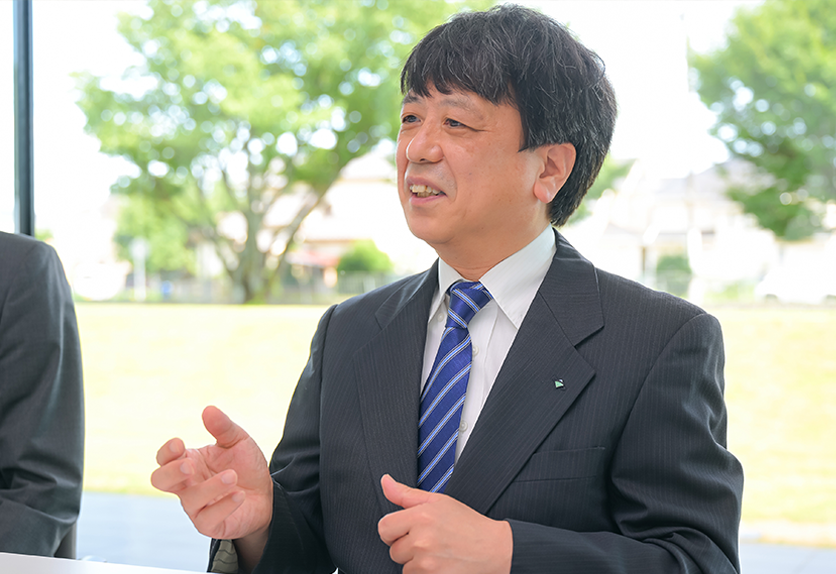
Kenichi NAKAOKA, Principal Engineer,
Geotechnical Engineering Department
OKUZAWA:
Tunnels are long-distance structures and it is difficult to survey the entire geology. If the tunnels are in plains, we can check the mud and sand by boring the ground every 100 m. But tunnels are often deep under the ground, making it difficult to examine them in detail. This is where geology is useful. Even in areas that cannot be seen, knowledge of the geology and topography are used to analyze the topography and geology of the proposed construction site.
MIYAKE:
During tunnel constructions, not only the workers but also clients and others outside the company visit the sites, but it takes hours to get to the face of the tunnel and back. So, Obayashi developed a remote presence system that allows us to confirm geological information, such as the results of geological surveys conducted from the ground prior to the excavation and of exploration of the area ahead of the face obtained during excavation. Our institute devised 3D visual presentation feature for the system, which shows key geological information obtained, allowing the excavation status of the tunnel to be visible online. Our clients highly evaluated this feature.
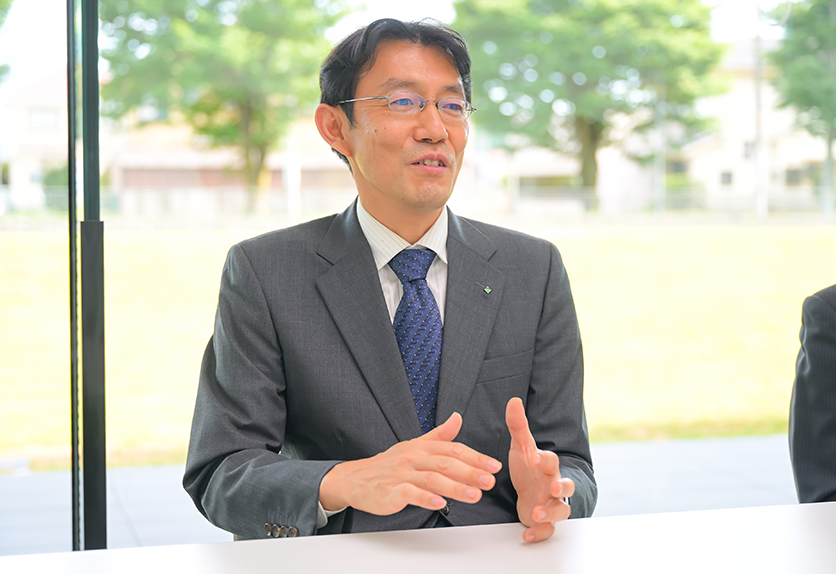
Koichi OKUZAWA, Manager,
Geotechnical Engineering Department
With the strengths and skills of individual workers
NAKAOKA:
Each member of our institute is in pursuit of deepening his or her expertise. For me, if I have questions about the results of an analysis or measurement, I tend to think about them all day, even at home. I feel that when Mr. Okuzawa and Mr. Miyake conduct research, they also delve into their intellectual curiosity. When I can’t get answers to something, I can always turn to other members with expert knowledge.
OKUZAWA:
At university, I majored in geology, and after graduation I was involved in a wide range of work beyond the field of pure geology, such as water quality surveys and topographic surveys of active faults. Since joining Obayashi, I’ve been able to accumulate additional experiences utilizing my prior knowledge, which allowed me to expand my knowledge and grow further.
MIYAKE:
Geology is the study of "exploration" to understand the rules of nature, while civil engineering is the study of "practical use" of physical phenomena. Our institute has the advantage of having experts in both fields.
And the atmosphere at the institute is very open. Senior staff members support me but also give me much discretion, which has led to my personal growth.
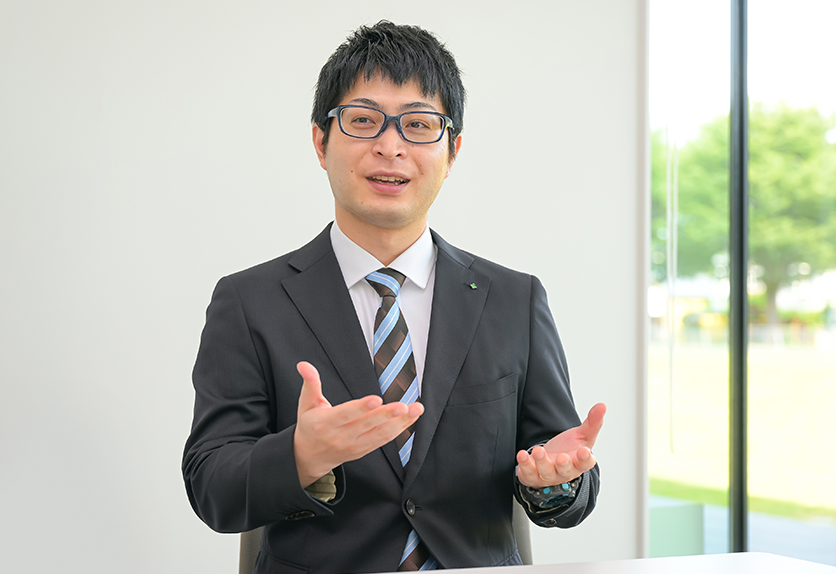
Yoshihiro MIYAKE, Chief,
Geotechnical Engineering Department
NAKAOKA:
I believe that unmanned technology will be essential in the future. Especially, unmanned operation will further improve safety at tunnel construction sites. At the same time, we must continue fundamental research to evaluate rock mass.
OKUZAWA:
The importance of AI is growing. Currently, rocks from construction sites are checked by the eyes of the staff, but our team is developing technology for AI to perform this task.
MIYAKE:
Not only the specialized knowledge of AI but also the practical wisdom of "when and how AI should be utilized” is important. Only when they work in tandem, new technologies can be effective on site and in research. Each member is striving to acquire knowledge of AI, but the institute also is providing opportunities to those who are willing to learn, which I feel is very encouraging.

